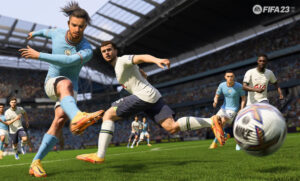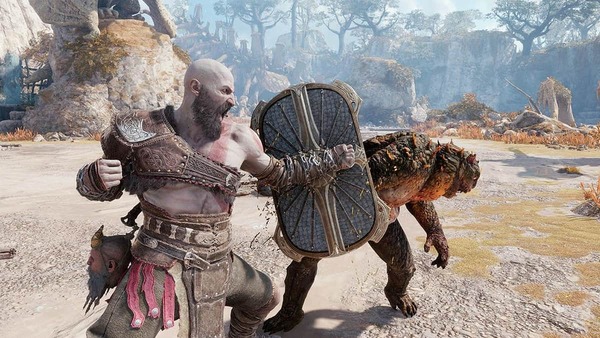FIFA 23, like many of its predecessors, has become a cornerstone of digital football. However, beneath the polished surface of its graphics, licenses, and expansive game modes lies a recurring issue that has plagued the series for years: the realism of its AI behavior. From unpredictable player movements to the unrealistic decision-making of both your teammates and the opposition, these gameplay flaws prevent the game from delivering the immersive football experience that players crave. This article aims to explore the core of these AI-related problems, dissecting their impact on FIFA 23’s realism, and offering potential solutions to enhance the game for future iterations.
The Illusion of Realistic Player Movement
One of the most noticeable issues in FIFA 23 is the unrealistic player movement, which often breaks the immersion of the game. While the graphical improvements are impressive, the behavior of players on the field can feel robotic or erratic. This is particularly evident in how players pivot, accelerate, and change direction. FIFA’s animation system often struggles to capture the nuanced fluidity of real-life football.
In real-life football, a player’s movement is a complex interaction of body mechanics, physics, and situational awareness. However, in FIFA 23, the game seems to fall short in replicating these aspects. When players change direction or accelerate, the transition feels stiff, sometimes resembling a mechanical movement rather than a fluid, organic shift. This is especially noticeable when controlling players in tight spaces or when trying to execute sudden turns to evade defenders.

Unpredictable AI Teammate Behavior
Another issue that negatively impacts FIFA 23's realism is the inconsistent behavior of AI-controlled teammates. As a player, you expect your virtual teammates to respond to tactical instructions, adjust their positioning, and support you effectively throughout the match. However, this is not always the case. In certain moments, AI players seem to act on their own, ignoring player commands or making decisions that don’t align with the match's context.
For example, AI-controlled defenders may choose to leave their positions at inopportune times, leading to open spaces that the opponent can exploit. Similarly, midfielders can often remain static or fail to make runs into dangerous areas, leaving you isolated in attack. This erratic behavior can frustrate players who rely on their teammates to execute tactical strategies, undermining the feeling of a well-coordinated team effort.
The Opposition AI: Unrealistic Reactions
While your own teammates often fall short, the opposition AI can be just as frustrating. In FIFA 23, the AI-controlled opponents sometimes behave in ways that are far removed from the logic of real football. For example, opposition players might suddenly change their approach in response to your actions, which can seem like an exaggerated or overcorrected reaction. These sudden shifts in behavior are often unpredictable and can leave players feeling as though they’re facing an opponent who is more in tune with the game mechanics than a true reflection of football intelligence.
This issue is particularly evident in high-pressure situations where the opposing AI suddenly becomes superhuman in its ability to intercept passes or tackle players. In a well-balanced match, there should be a level of unpredictability to keep things exciting, but the way FIFA 23’s AI reacts feels unnatural and disconnected from the flow of the game.

AI Decision-Making During Critical Moments
Another key aspect of FIFA 23’s AI problem lies in its decision-making during crucial moments of the game. Whether it's a crucial pass, a last-minute tackle, or a shot on goal, the AI's ability to make intelligent decisions seems to fluctuate wildly. In some instances, your teammates may attempt a pass that’s clearly not viable, or they may make a move that puts them in a worse position, leaving you questioning the AI’s logic.
In contrast, when controlling players manually, you might find that your teammates behave erratically, even though you're trying to set up a play or position them in space. This poor decision-making can be particularly noticeable during key moments in the game, such as counterattacks or defensive situations. A lack of situational awareness from the AI undermines the match’s flow and often leads to missed opportunities or mistakes that wouldn't occur in real football.
Difficulty in Implementing Tactical Systems
FIFA 23 offers an array of tactical systems, from defensive formations to attacking strategies, that players can customize. However, one of the problems lies in how these systems interact with the AI's behavior. Despite setting your tactics, AI teammates often fail to adhere to your instructions. For example, defenders who should be pressing high up the field may hang back, while attackers instructed to make runs may ignore your commands entirely.
The game’s tactical instructions do not always seem to affect the AI in a meaningful way. As a result, players might find themselves repeatedly adjusting their formations and tactics, hoping for a better result, only to encounter the same erratic behavior from their teammates. This lack of tactical consistency further detracts from the game’s realism, as it becomes difficult to implement any coherent strategy.
AI’s Lack of Contextual Awareness
In FIFA 23, the AI often fails to respond appropriately to changing match conditions. Whether the game is in the early stages or you're deep into injury time, the AI-controlled players don't always adjust their approach based on the situation. For instance, if you’re leading in the final minutes, AI opponents rarely show a sense of urgency by pushing forward in a more aggressive manner or attempting risky plays.
On the flip side, when AI-controlled teams are losing, they may not show the necessary desperation to mount a comeback. Similarly, your teammates may not show the urgency needed when you’re trailing, even if you’ve set a more aggressive style of play. This lack of situational awareness hurts the overall realism of FIFA 23, as real-life football teams adapt to match circumstances with a sense of tactical and emotional awareness that is not fully reflected in the game.
The Impact of AI Behavior on Online and Career Modes
The issues with AI behavior are not limited to single-player modes like Career Mode. Players who enjoy online play or squad modes also encounter similar frustrations. In online matches, AI teammates may often make poor decisions or fail to support the player in critical moments. In these multiplayer settings, the impact of AI behavior is even more pronounced, as players are forced to compensate for teammates who aren't reacting intelligently.
In Career Mode, this issue extends to both the tactical approach and player development systems. AI-controlled teams in career mode often make unrealistic transfers or play in ways that feel disjointed from the player's vision. The AI’s inconsistency in playing styles and tactics in these modes detracts from the overall immersion, and often leads to a less-than-realistic simulation of football.
Solutions and Future Improvements
The key to improving FIFA 23’s realism lies in refining the AI system. One possible solution would be to enhance the decision-making algorithm, allowing the AI to react more logically to match scenarios. By improving contextual awareness, players would feel that their teammates and opponents behave in a way that reflects the dynamics of a real football match.
Another important step would be to create more fluid player movements that better capture the athleticism of real-life players. This could be achieved by improving the animation system and incorporating more advanced motion-capture technology to enhance player movement and decision-making. The use of machine learning techniques to analyze real football matches and adapt player behavior accordingly would further elevate the game’s realism.

Conclusion: A Need for Smarter AI and Improved Player Movements
FIFA 23 is a visually stunning game that delivers a rich and diverse football experience, but its AI behavior remains a significant barrier to achieving true realism. Whether it’s the unpredictable movements of players, the erratic decision-making of AI teammates, or the lack of contextual awareness in crucial moments, these issues hinder the game’s potential. For FIFA 24 and future iterations, EA Sports must focus on refining AI decision-making and player animations to create a more fluid and realistic football experience. Until these improvements are made, FIFA 23 will remain a game with immense potential but ultimately flawed in delivering a truly immersive football simulation.




 KARMA: The Dark World
A psychological horror game where claims and insurance twist reality, memory, and identity.
Read full review
KARMA: The Dark World
A psychological horror game where claims and insurance twist reality, memory, and identity.
Read full review
 Splitgate 2
Splitgate 2 is a fast-paced sci-fi multiplayer shooter that combines arena combat with portal mechanics, allowing players to teleport across maps for strategic movement and intense battles.
Read full review
Splitgate 2
Splitgate 2 is a fast-paced sci-fi multiplayer shooter that combines arena combat with portal mechanics, allowing players to teleport across maps for strategic movement and intense battles.
Read full review
 Car Dealer Simulator
Car Dealer Simulator lets you buy, repair, and sell cars to build your dealership empire and manage profits
Read full review
Car Dealer Simulator
Car Dealer Simulator lets you buy, repair, and sell cars to build your dealership empire and manage profits
Read full review
 Factorio
Factorio is a strategy game about building and managing automated factories to survive, expand, and launch rockets.
Read full review
Factorio
Factorio is a strategy game about building and managing automated factories to survive, expand, and launch rockets.
Read full review
 Rust
Survive, build, and dominate in Rust — the ultimate multiplayer survival game where danger lurks at every turn. Craft, raid, and battle to stay alive.
Read full review
Rust
Survive, build, and dominate in Rust — the ultimate multiplayer survival game where danger lurks at every turn. Craft, raid, and battle to stay alive.
Read full review
 Gorrila Tag
Experience intense VR action in Gorilla Tag—a fast-paced multiplayer game using unique movement mechanics that turn you into a climbing, running, and tagging gorilla. Free to play and wildly addictive!
Read full review
Gorrila Tag
Experience intense VR action in Gorilla Tag—a fast-paced multiplayer game using unique movement mechanics that turn you into a climbing, running, and tagging gorilla. Free to play and wildly addictive!
Read full review






















